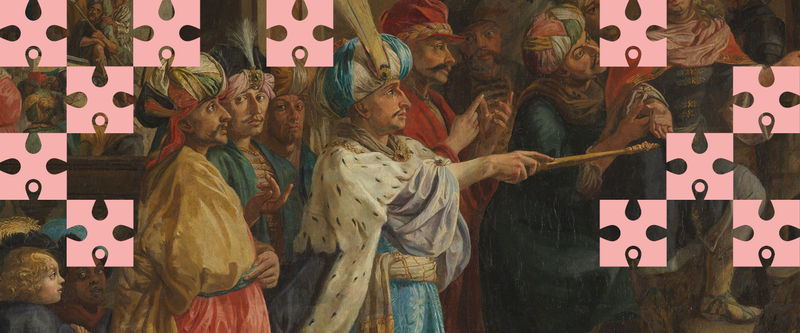Discover the home and workshop of the Plantin-Moretus publishing family, a unique historical experience in a UNESCO World Heritage Site. The history of books, book printing and entrepreneurship resonates in the creaking oak floorboards. See the world's oldest printing presses, and so much more.
Museum Plantin-Moretus
The Ethiopian King, Peter Paul Rubens
The story of the three kings is strongly intertwined with the history of the Moretus family. Jan Moerentorf gave his name a Latin twist as humanists do, renaming himself Moretus and looking to the rex Morus, or Ethiopian king, for inspiration. His coat of arms featured the Latin motto ratione recta or guided by reason, like the Magi. Jan I Moretus named his three eldest sons after Gaspar, Melchior and Balthasar, the three kings. These names appear frequently throughout the family history. The name Balthasar, after the Ethiopian king, proved especially successful among managers of the Plantin printing company. Between 1630 and 1633, Balthasar I Moretus commissioned a series of paintings from his friend Peter Paul Rubens, including portraits of The Three Magi. The Ethiopian king is portrayed with a turban which frames his dark face. In his hands he carries the box of myrrh.
The Three Magi remained in the house until 1658. We have no idea when they were sold. After 1881, the group of portraits was separated, and Caspar and Melchior ended up in collections in the United States. The Ethiopian king remained in Europe. In 2000, the City of Antwerp was able to re-acquire it for the Museum Plantin-Moretus. Today the Ethiopian King hangs in the large salon with the family portraits, near the many Balthasars who took their names from this king.
The Adoration of the Magi, Peter Paul Rubens and Theodoor Galle, Missale Romanum, 1613, Plantin-Moretus
After Balthasar I and his brother Jan II Moretus became the managers of the Plantin publishing house, they decided to rework the illustrations in the liturgical works they published.
In 1613, the brothers published a new edition of the Missale Romanum. To make this work even more prestigious and because some of the illustrations were no longer deemed adequate, they commissioned two new illustrations from their friend Rubens, namely The Adoration of the Magi and The Ascension of Christ. Rubens also designed the two new frames on the facing page. The engraving and printing was done in the workshop of Theodoor Galle.
From 1613, Rubens regularly created designs for the Moretuses. He mainly worked for the Plantin printing house, rarely offering his services to other publishers. Thanks to the friendship between Balthasar I and Rubens, the new Baroque book reached all corners of the world.
You can find this book in Room 31, the room with religious works, where one of the two coloured images are displayed. These are regularly alternated to protect them from light.
Practical information
Accessibility
- Is partially accessible.
- The museum is only accessible on the ground floor for people in wheelchairs.
Master Tour Peter Paul Rubens




